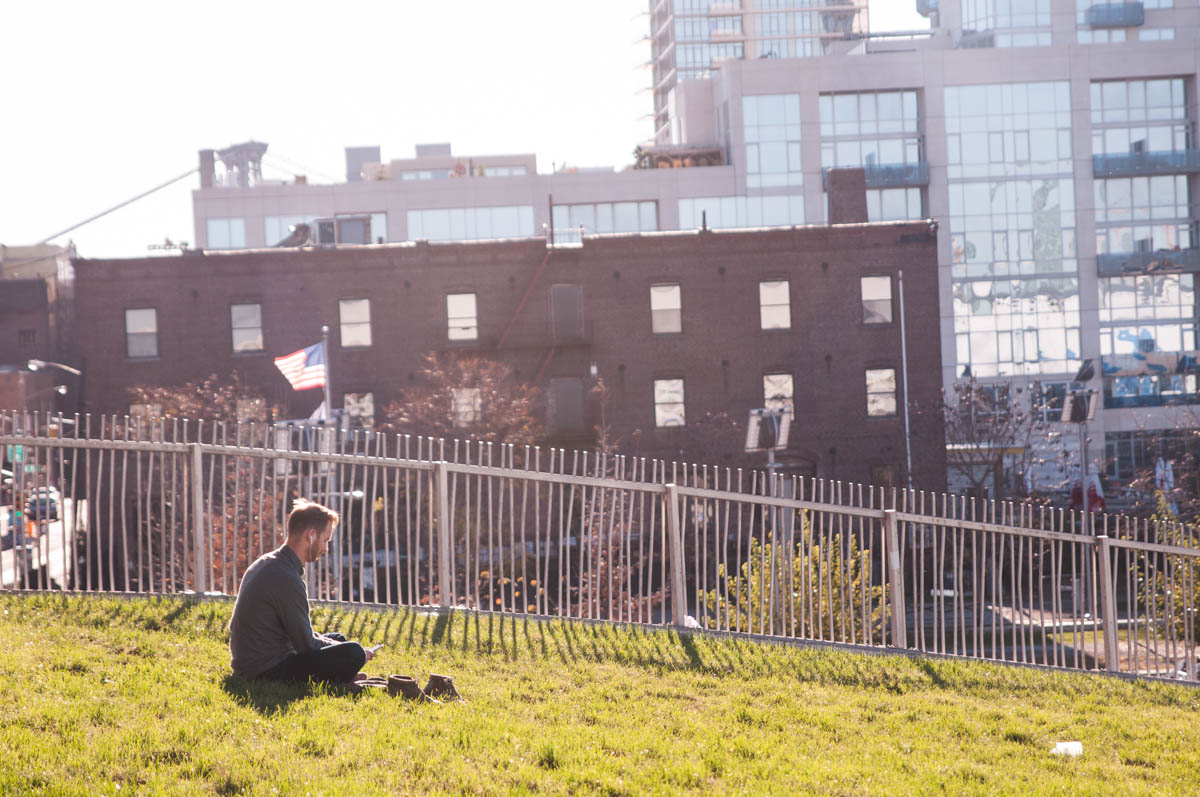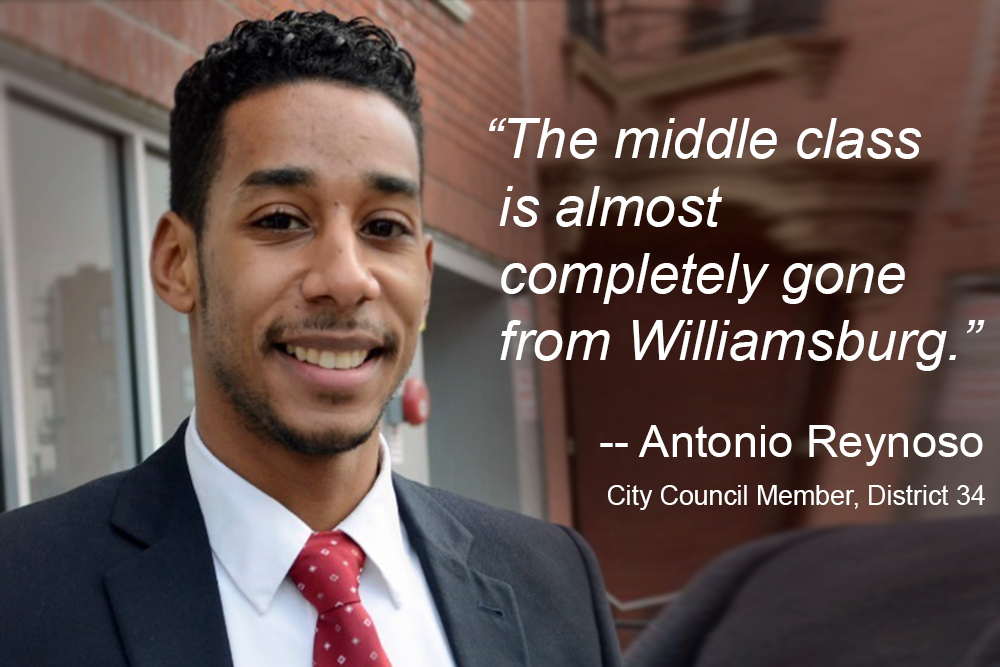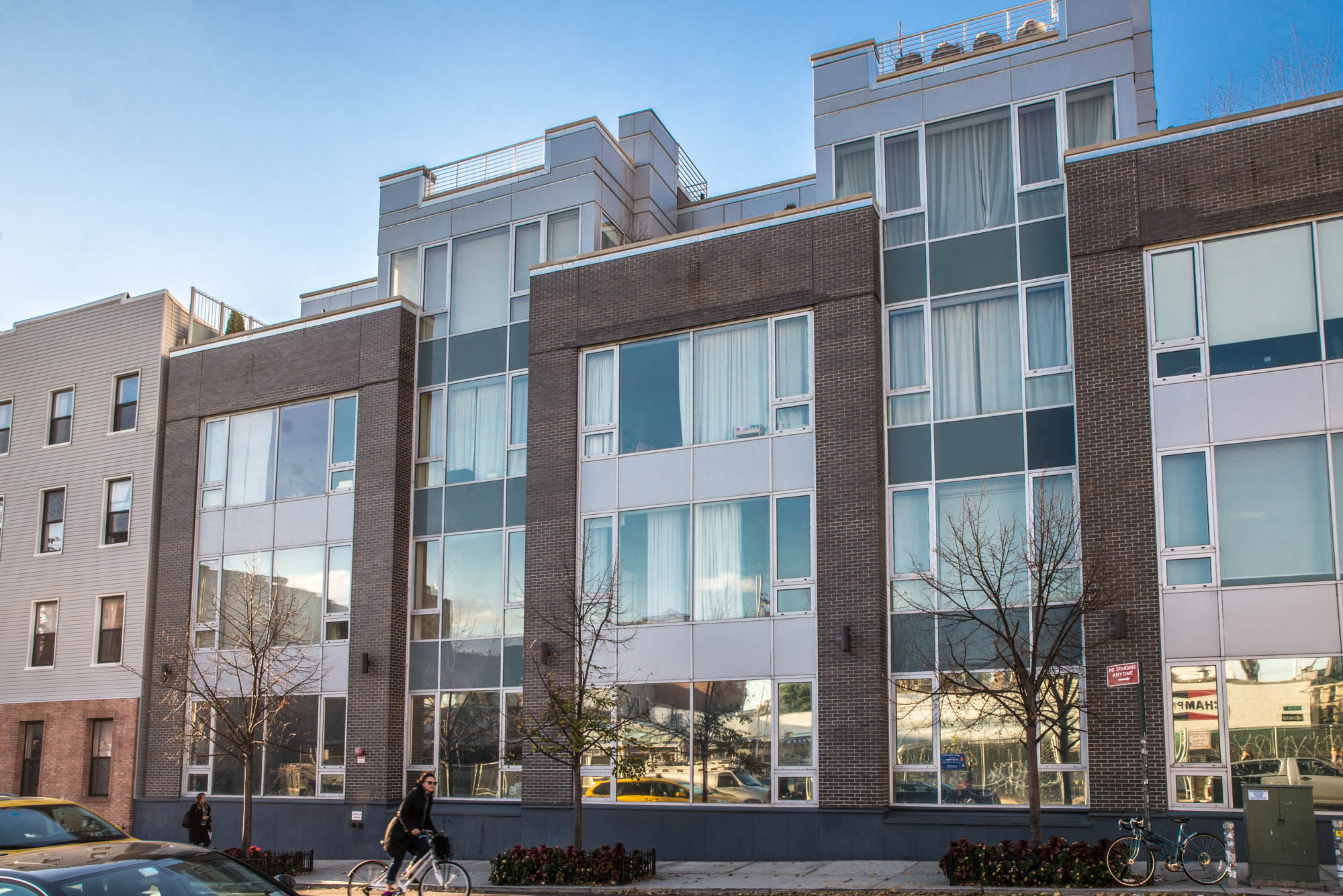Bushwick Needs 'Burg-Style Rezoning -- But With Affordable Housing, Says Councilman
Mayor Bill de Blasio’s Mandatory Inclusionary Zoning proposal has gotten a lot of flak from local community boards, but at least one Brooklyn City Council member is throwing his support behind the plan. And he’s gunning for a ‘Burg-style rezoning of Bushwick — but, this time, with tons of mandatory affordable housing. First, a quick reminder: Mandatory Inclusionary…


Mayor Bill de Blasio’s Mandatory Inclusionary Zoning proposal has gotten a lot of flak from local community boards, but at least one Brooklyn City Council member is throwing his support behind the plan. And he’s gunning for a ‘Burg-style rezoning of Bushwick — but, this time, with tons of mandatory affordable housing.
First, a quick reminder: Mandatory Inclusionary Zoning would require residential developers to make 25 to 30 percent of their development affordable if they take advantage of a rezoning.
Mayor de Blasio really likes this idea because he sees it as his ticket to building or preserving 200,000 units of affordable housing in the next 10 years. But individual Community Boards and the Brooklyn Borough Board aren’t too keen on the plan, some citing concerns over the lack of middle-income options.
But City Council Member Antonio Reynoso — representing Bushwick, Williamsburg, and Ridgewood, Queens — just threw his support behind the Mayor’s proposal. Reynoso released a report (PDF) finding that Mandatory Inclusionary Zoning would have had a major impact on the number of affordable units in Williamsburg today if it had been in place in 2005 when the waterfront was rezoned.

As it happened, inclusionary housing was voluntary for Williamsburg’s developers — meaning they had the option to build more units if they included affordable housing, but were not required to do so. All in all, 9,167 new units of housing were built in the neighborhood since the rezoning, according to the City’s Department of City Planning and Housing Preservation and Development.
Of those, just 1,487 — 16 percent — are affordable units. If Mandatory Inclusionary Zoning had been in place, that number would have nearly doubled to 2,750 units of permanent affordable housing.
In his report, Reynoso goes a step further, arguing that the additional apartments could have mitigated displacement of existing residents — a major downside to gentrification. According to census data, the number of Williamsburg’s Latino residents decreased by 34 percent between 2004 and 2014.
“For every affordable housing unit that was actually built in our district, we saw three families being displaced,” Reynoso said last week in an interview on NY1. “The middle class is almost completely gone from Williamsburg.”

The report also argues Bushwick should be rezoned — but it skips over some key facts.
In Bushwick, the number of affordable units in the area could have doubled if the area had been rezoned and Mandatory Inclusionary Zoning had been put in place in 2010, according to the report.
It says the neighborhood has had the same zoning since 1961 — and makes no mention of the contentious 2013 rezoning of the massive Rheingold Brewery site, which takes up about 10 city blocks.
Developer Read Property Group and others promised to make 30 percent of the units affordable. But those promises aren’t legally binding and now the community is fretting that they won’t get any affordable housing at all.
Also not mentioned: Bushwick has a significant amount of affordable housing, thanks to the machine-style politics of the late Vito Lopez. The report claims the area needs a rezoning because its existing R6 zoning “allows for the development of tall buildings with no affordable housing.”
That’s somewhat misleading: The R6 zoning has kept Bushwick’s residential areas low-rise and contextual. A rezoning would likely allow taller buildings in exchange for mandatory affordable units, a massive change for the area.
“North Brooklyn is a cautionary tale, showing how essential a new Mandatory Inclusionary Housing policy will be to the future of our borough and our city,” Reynoso wrote in his report.
The Mandatory Inclusionary Zoning proposal is nearly halfway through ULURP — but all of the previous votes from the Community Boards and Borough Board were merely advisory and non-binding. Next up, Borough President Adams weighs in. But nothing’s officially decided until the City Council makes a decision.
With Council member Reynoso stepping up and supporting the plan, it increases the likelihood that other Council members will join him.
But do you find these numbers compelling?
Related Stories
What Is Gentrification, Anyway?
Brooklyn Borough Board Rejects Mayor’s Mandatory Inclusionary Zoning Proposal
De Blasio Zoning Plan Will Bring Mucho Affordable Housing to Brooklyn Mega Projects
Email tips@brownstoner.com with further comments, questions or tips. Follow Brownstoner on Twitter and Instagram, and like us on Facebook.
[sc:daily-email-signup ]




What's Your Take? Leave a Comment